Oxygen, the cornerstone of Earth’s life system and a catalyst for modern industrial civilization, has long transcended traditional boundaries. This article systematically explores oxygen technology and its core applications, revealing how this element has shaped human society past, present, and future.
Oxygen is widely utilized in medical, industrial, environmental, aerospace, and high-tech sectors. In healthcare, it is used for emergency care, surgery, chronic disease management, and special environmental support. In industry, oxygen enhances efficiency in metallurgy, chemical engineering, and environmental treatment. Aerospace technology relies on liquid oxygen as a propellant and life support system, while ultra-high-purity oxygen ensures precision oxidation processes in semiconductor manufacturing.
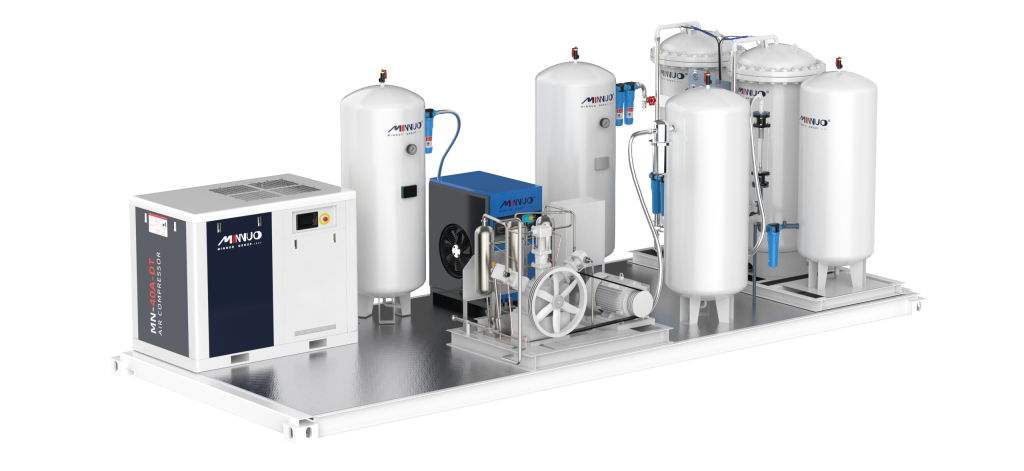
I. Life Support: The Oxygen Revolution in Medicine and Health
(A) Clinical Medicine’s “Lifeline”
Oxygen’s role in healthcare spans diagnosis, treatment, and rehabilitation, underscoring its critical importance.
Critical Care:
In ICU wards, High-Flow Nasal Cannula (HFNC) therapy plays a vital role in maintaining blood oxygen saturation for patients with acute respiratory distress syndrome (ARDS). The MINNUO medical oxygen concentrator, with a stable output purity of up to 99.5%, provides robust protection for patients’ health. Clinical data show that the successful rescue rate for ARDS patients increased by 42% after using the MINNUO concentrator alongside HFNC. This significant improvement highlights the pivotal role of high-purity oxygen in critical care. In these life-or-death moments, every breath of pure oxygen can become a beacon of hope.
Perioperative Management:
During general anesthesia, medical oxygen and nitrous oxide (N₂O) are mixed at a 1:1 ratio to achieve effective analgesia while preventing tissue hypoxia. In thoracic and neurosurgery, where oxygen concentration requirements are stringent, levels must be precisely controlled between 40% and 60% to protect delicate neural cells. Even brief hypoxia during brain surgery can cause severe neurological damage. Maintaining precise oxygen concentration is akin to walking a tightrope, demanding extreme accuracy and stability. The MINNUO medical oxygen concentrator reliably delivers oxygen concentrations that meet surgical standards, ensuring successful operations.
Chronic Disease Management:
For chronic obstructive pulmonary disease (COPD) patients, home oxygen concentrators are indispensable. Low-flow oxygen therapy (1–3 L/min) for 15 hours daily significantly improves lung function over time. Studies indicate that COPD patients adhering to long-term low-flow oxygen therapy achieve a 37% higher 5-year survival rate. These patients experience reduced dyspnea and improved quality of life, enabling them to re-engage in daily activities and enjoy life.
(B) Special Environmental Support Systems
High-Altitude Medicine:
At altitudes above 3,000 meters, where oxygen levels drop sharply, acute mountain sickness (AMS) is common. Portable oxygen concentrators operating in pulse mode provide rapid relief for AMS symptoms. Climbers experiencing headaches, dizziness, or breathlessness can use these lightweight devices to replenish oxygen, mitigate hypoxia, and safely continue their ascent.
Diving Medicine:
Hyperbaric oxygen chambers utilize 95% pure oxygen to treat decompression sickness, leveraging Boyle’s Law. By precisely regulating pressure gradients, nitrogen bubbles dissolved in body tissues are expelled. During deep-sea dives, divers absorb high-pressure nitrogen, which forms bubbles upon rapid ascent, causing decompression sickness. Hyperbaric oxygen therapy facilitates nitrogen elimination, safeguarding divers’ health.
II. Industrial Heartbeat: Oxygen-Driven Modern Manufacturing
(A) Metallurgy’s “Alchemy”
Steelmaking:
MINNUO industrial oxygen concentrators (99.8% purity) revolutionize steel production. Blowing high-purity oxygen into open-hearth furnaces triples efficiency compared to traditional methods. In converter steelmaking, oxygen consumption reaches 50–60 m³ per ton of steel, with a decarbonization rate of 0.08%/min. Oxygen accelerates carbon oxidation in molten steel, enhancing productivity. In electric arc furnaces, oxygen-enriched combustion (O₂ >25%) reduces energy consumption by 80 kWh per ton while improving steel quality.
Non-Ferrous Metal Refining:
In copper flash smelting, oxygen concentrations of 35%–45% elevate reaction temperatures to 1,250°C, achieving over 99% sulfur capture. High-purity oxygen accelerates ore reactions, boosts efficiency, and minimizes environmental pollution. Precise oxygen control is vital for optimizing yield, quality, and cost-effectiveness.
(B) Chemical Industry’s Oxidation Chain
Basic Chemical Synthesis:
Oxygen purity and dosage critically influence reactions. For instance, ethylene epoxidation to produce ethylene oxide requires oxygen concentrations above 99.5%, achieving 80% selectivity. High-purity oxygen ensures desired reaction pathways, enhancing product purity and yield. In coal-to-methanol processes, cryogenic air separation units supplying 99.6% oxygen elevate gasification efficiency to 98%, maximizing resource utilization.
Environmental Treatment:
Ozone generators using 93%–95% oxygen-enriched air improve wastewater treatment efficiency, achieving 95% COD removal. Ozone’s strong oxidizability, amplified in oxygen-rich environments, effectively degrades organic pollutants, addressing water contamination challenges.
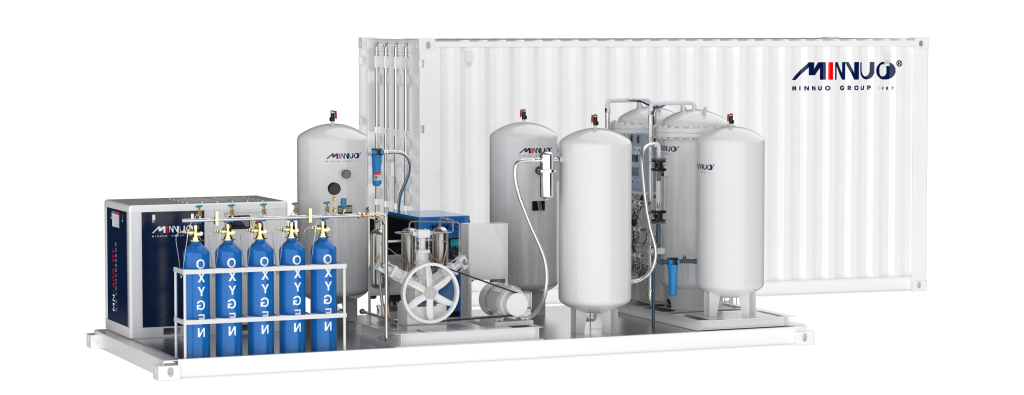
III. Cutting-Edge Technology: Oxygen-Powered Frontiers
(A) Aerospace’s Liquid Oxygen Revolution
Propulsion Systems:
Liquid oxygen (LOX) paired with liquid hydrogen (1:6 ratio) delivers a specific impulse of 450s, generating 3,400 tons of thrust for rockets like Saturn V. This propellant combination enables spacecraft to escape Earth’s gravity, propelling humanity’s cosmic exploration.
Life Support Systems:
The International Space Station employs molecular sieve oxygen generators (OGA), producing 2.3 kg of oxygen hourly via water electrolysis. Byproduct hydrogen aids CO₂ reduction, ensuring astronauts’ survival in space. These systems act as “life factories,” sustaining long-term missions.
(B) Semiconductor Manufacturing’s Precision Oxidation
Ultra-high-purity oxygen (99.999%) is essential in wafer processing. It enables thermal oxidation to form SiO₂ dielectric layers with ±0.1 nm thickness control and facilitates nanoscale pattern transfer via O₂/H₂ plasma etching (1:4 ratio). Such precision drives advancements in chip technology, underpinning modern electronics.
IV. Green Transformation: Oxygen-Driven Sustainability
(A) Clean Energy Production
Hydrogen Economy:
Proton exchange membrane electrolyzers using 99.95% oxygen achieve over 75% hydrogen production efficiency. High-purity oxygen lowers costs, accelerating hydrogen’s adoption in transportation and energy storage.
Biomass Energy:
Oxygen-enriched combustion (O₂ >21%) boosts biomass boiler thermal efficiency to 92% while cutting carbon emissions by 40%. This technology promotes sustainable energy utilization.
(B) Environmental Remediation
Water Restoration:
Microporous aeration systems injecting 99% oxygen elevate river dissolved oxygen from 2 mg/L to 8 mg/L, fostering microbial activity to purify water and restore ecosystems.
Soil Remediation:
In situ chemical oxidation (ISCO) with ozone/oxygen mixtures degrades petroleum hydrocarbons with 99% efficiency, rehabilitating contaminated soil sustainably.
V. Daily Life’s Oxygen Revolution
(A) Food Industry’s Preservation Breakthrough
Modified Atmosphere Packaging (MAP): For fresh meat, a gas mix of O₂/CO₂/N₂ (70/20/10) extends shelf life to 21 days by inhibiting microbial growth. For baked goods, 95% N₂ + 5% O₂ preserves texture while preventing mold.
(B) Sports and Health Management
Altitude Training:
Simulating 3,000-meter hypoxia with intermittent oxygen supplementation boosts athletes’ VO₂max by 12%, enhancing endurance and performance.
Rehabilitation Medicine:
Hyperbaric oxygen therapy (2.5 ATA) shortens sports injury recovery by 30%, promoting tissue repair and reducing inflammation.
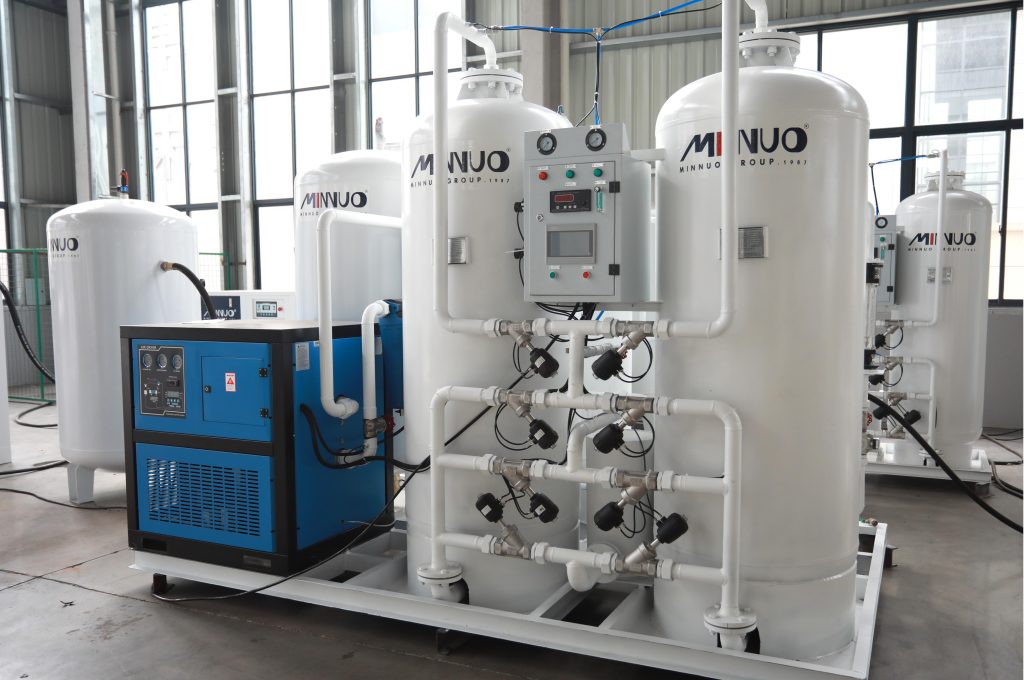
VI. MINNUO Oxygen Technology: Tailored Solutions for Every Scenario
(A) Modular System Design
MINNUO’s PSA (Pressure Swing Adsorption) 2.0 technology enables intelligent, energy-efficient operation with 35% lower consumption. Its 13Å molecular sieve + activated carbon composite bed ensures oxygen purity (dew point <−70°C), meeting stringent industry demands.
(B) Industry-Specific Customization
Medical Grade:
MINNUO’s ICU-grade concentrators integrate 0.01μm bacterial filters, complying with ISO13485 standards to deliver safe, pure oxygen.
Industrial Grade:
MINNUO’s high-temperature-resistant (150°C) systems with waste heat recovery suit metallurgy, ensuring reliability and energy efficiency.
VII. Conclusion
From deep-sea life support to Martian rover fuel production, from cancer radiotherapy sensitization to quantum computer cooling, oxygen technology continues to redefine its applications.
MINNUO Group is pioneering fourth-generation magnetic refrigeration air separation and nano molecular sieve materials, pushing oxygen applications toward 99.9999% purity and microliter-level precision.



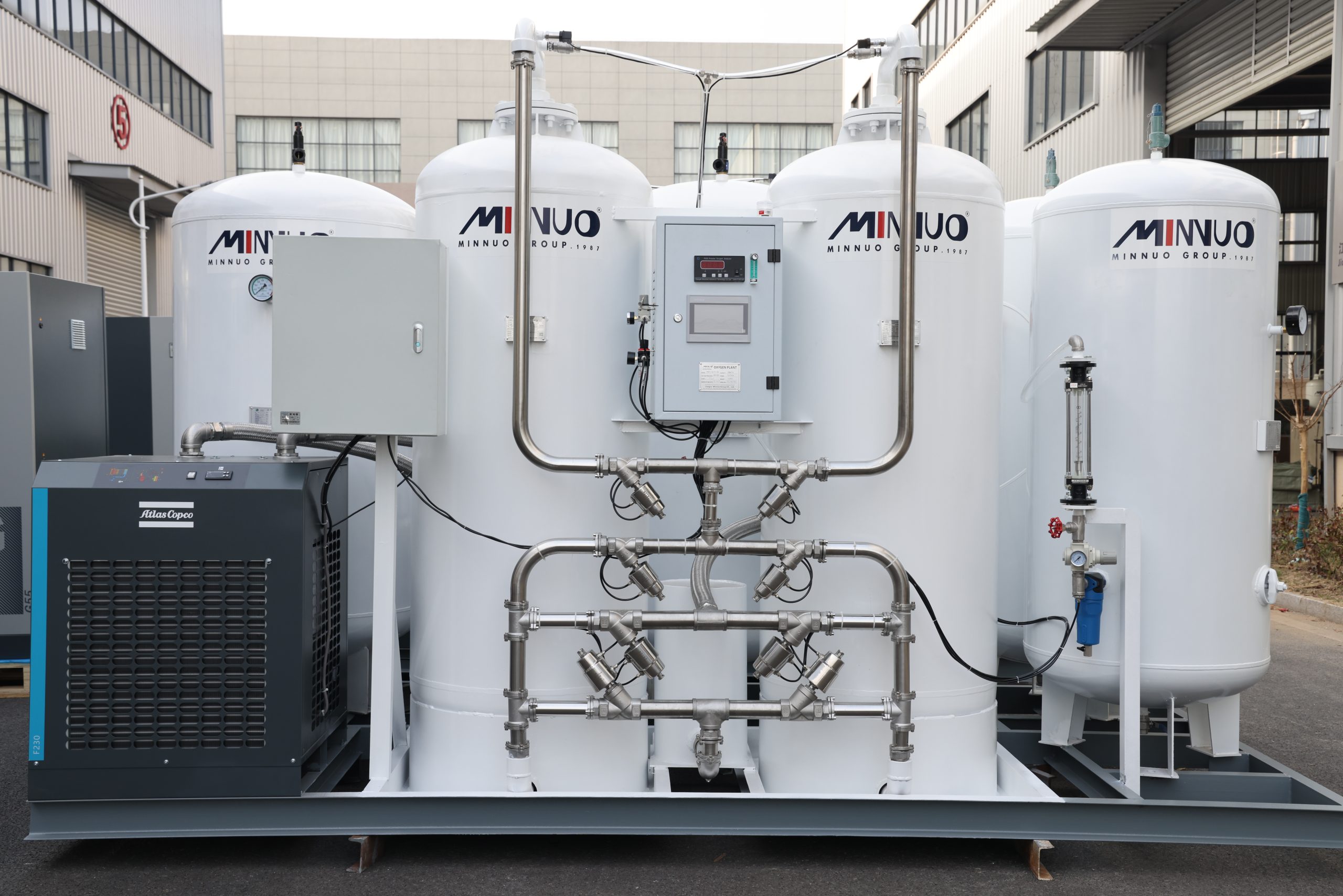
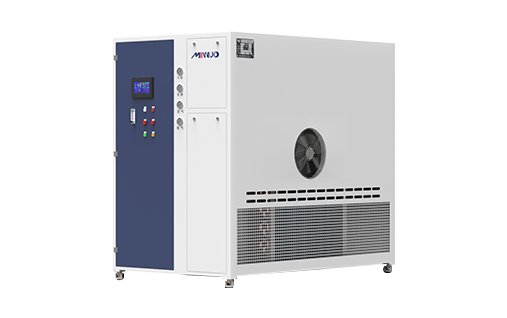

 sales2:+86 17506119168
sales2:+86 17506119168

